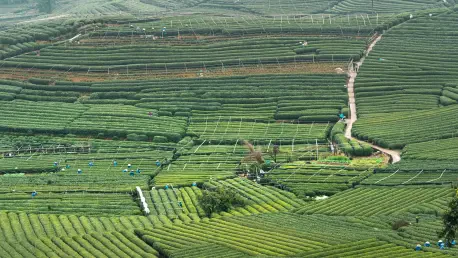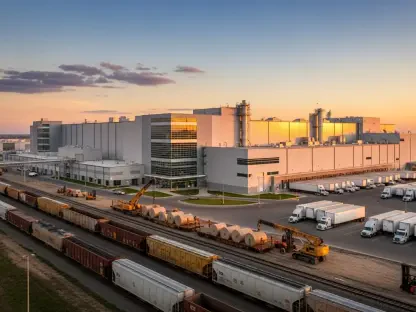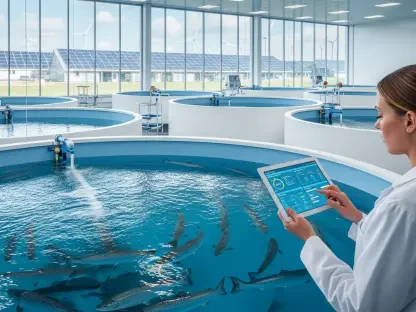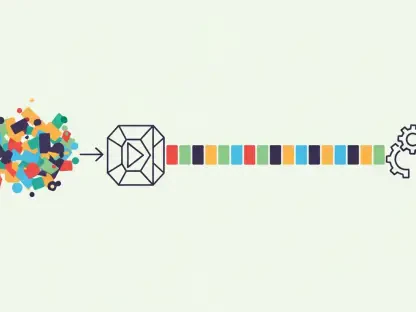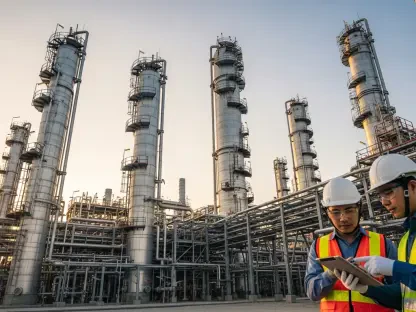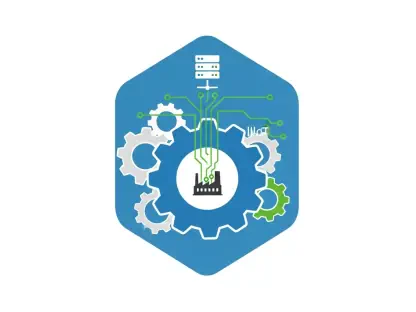In a remarkable leap toward sustainable agriculture, China has pioneered an innovative approach through green technology to address the intertwined challenges of feeding an enormous population and preserving the environment. With nearly one-fifth of the global population but only one-tenth of the world’s arable land, the nation has long depended on intensive farming practices, heavily utilizing chemical fertilizers to secure food supplies. Yet, this strategy has inflicted significant ecological harm, from water contamination to soil degradation and air pollution. Spearheaded by Professor Wenfeng Cong and a dedicated team at China Agricultural University, green technology emerges as a transformative framework. It promises not only to enhance grain production but also to drastically reduce environmental damage. This development marks a critical turning point, offering a glimpse into how agriculture can evolve to meet modern demands without sacrificing the planet’s health. The journey of this technology reveals a compelling narrative of innovation, scalability, and global potential.
Tackling the Environmental Cost of Intensive Farming
China’s agricultural history is a testament to the power of intensive methods, driven by the urgent need to feed over a billion people with limited arable land. The country consumes a staggering 32% of the world’s nitrogen fertilizers, a practice that has propelled crop yields to impressive heights. However, the environmental repercussions are severe—soil acidification erodes land quality, nitrate runoff pollutes vital water sources, and air pollution from particulate matter like PM2.5 poses serious health risks. This creates a pressing dilemmmaintaining high grain output without further degrading ecosystems. The scale of fertilizer dependency underscores the urgency for alternative solutions that can sustain productivity while mitigating these detrimental effects. Green technology steps into this gap, aiming to redefine the balance between agricultural necessity and environmental stewardship.
Beyond the immediate damage, the long-term consequences of such farming practices threaten food security itself. Degraded soils lose their fertility over time, demanding even more chemical inputs to maintain yields, thus perpetuating a vicious cycle of dependency and pollution. Water bodies laden with nitrates harm aquatic ecosystems and compromise drinking water safety, affecting rural communities most directly. Meanwhile, air quality issues contribute to respiratory illnesses, adding a public health crisis to the environmental one. The challenge lies in breaking this cycle without sacrificing the ability to produce enough food for a growing population. Green technology offers a pathway to disrupt this pattern by focusing on efficiency and sustainability, ensuring that farming practices evolve to protect both the land and the people who depend on it.
Revolutionizing Agriculture with Green Technology
At the heart of this agricultural transformation is green technology, a comprehensive strategy built on optimizing the “soil-crop-microbe” system to achieve higher productivity with minimal environmental harm. Guided by the innovative “12345” model, this approach prioritizes real-world farming needs and fosters collaboration among farmers, scientists, and policymakers. It integrates techniques like high-density crop populations through intercropping systems, precise rhizosphere regulation with smart fertilizers, and soil health management using organic amendments. These methods work in tandem to enhance nutrient uptake, reduce chemical inputs, and improve soil structure. The result is a farming system that produces more with less, directly addressing the conflict between output demands and ecological preservation.
This isn’t merely an academic concept but a practical overhaul of traditional practices. By focusing on synergies within the agricultural ecosystem, green technology minimizes waste and maximizes resource use. For instance, intercropping systems pair crops like corn and fava beans to optimize space and nutrients, while smart fertilizers ensure that plants receive exactly what they need, cutting down on excess runoff. Soil health practices, such as conservation tillage, further support long-term productivity by fostering microbial diversity and preventing erosion. This holistic approach challenges the notion that high yields must come at nature’s expense, proving that innovation can align food production with environmental goals. It represents a shift toward smarter agriculture, adaptable to diverse farming conditions.
Impressive Outcomes from Field Trials
The effectiveness of green technology is backed by compelling evidence from extensive field trials conducted across China. Spanning 12,403 sites over a 15-year period from 2005 to 2020, the results are nothing short of remarkable. Grain production surged by 21% to 87% without corresponding increases in nitrogen fertilizer use, shattering the myth that higher yields require heavier chemical inputs. Additionally, Nitrogen Use Efficiency (NUE) saw improvements ranging from 24% to 32%, indicating a significant reduction in nutrient waste. Environmental benefits were equally striking, with nitrogen losses plummeting by 50% to 56% and greenhouse gas emission intensities dropping by 31% to 47%. These figures highlight a dual victory for agriculture and ecology, showcasing the potential for sustainable intensification.
The implications of these outcomes extend far beyond mere statistics. For farmers, the increased yields translate into greater food security and economic stability, especially in regions where resources are scarce. The reduction in nitrogen losses means cleaner waterways, preserving ecosystems and safeguarding community health. Lower greenhouse gas emissions contribute to broader climate change mitigation efforts, aligning agricultural progress with global environmental targets. These trials demonstrate that green technology isn’t a niche experiment but a robust solution capable of delivering measurable impact. The data provides a strong foundation for confidence in this approach, encouraging further investment and research to refine and expand its applications across varying agricultural landscapes.
Scaling Up for Nationwide Impact
The adoption of green technology across China speaks volumes about its practicality and scalability. By 2015, it had been implemented over 40 million hectares of farmland, reaching 20.9 million farming households in 452 counties. This widespread rollout illustrates that sustainable farming can operate on a massive scale, transforming entire regions. Farmers benefit from higher yields and reduced input costs, which bolster rural economies and improve livelihoods. Enhanced soil health ensures long-term productivity, breaking the cycle of degradation that often accompanies intensive methods. This large-scale success story proves that green technology can be more than a pilot project—it’s a viable model for systemic change in agriculture.
Moreover, the ripple effects of this adoption touch on broader societal gains. Improved environmental conditions, such as reduced water contamination and lower air pollution, directly enhance the quality of life for millions. Rural communities, often the most vulnerable to ecological damage, see tangible improvements in their surroundings and health outcomes. The economic advantages also empower farmers to invest in further innovations, creating a positive feedback loop of progress. Policymakers gain a proven framework to integrate into national strategies, ensuring that agricultural development aligns with sustainability goals. The scale of this implementation serves as a powerful testament to the adaptability and real-world impact of green technology, setting a precedent for other countries to follow.
Global Lessons from China’s Innovation
Looking beyond China’s borders, green technology presents a promising blueprint for global agriculture, particularly in regions grappling with similar challenges of food security and environmental degradation. Its alignment with the United Nations Sustainable Development Goals—such as eradicating hunger, ensuring clean water, and taking climate action—underscores its relevance on an international stage. If adopted widely, this approach could significantly reduce agriculture’s environmental footprint, addressing critical issues like resource depletion, nutrient runoff, and greenhouse gas emissions. The principles behind this technology offer an adaptable framework that can be tailored to diverse agro-ecological contexts, making it a valuable tool for nations worldwide.
The potential for global impact lies in the universal nature of the challenges it addresses. Many countries face the same tension between producing enough food and protecting natural resources, often exacerbated by rising fertilizer costs and climate change. China’s experience provides actionable insights, demonstrating how integrated, systems-based solutions can yield results. The collaborative model, involving farmers, scientists, and policymakers, offers a replicable structure for stakeholder engagement elsewhere. By sharing knowledge and adapting strategies to local conditions, other nations can leverage this innovation to build resilient food systems. Green technology thus stands as a beacon of possibility, highlighting a path toward sustainable agriculture on a worldwide scale.
Redefining the Future of Farming
Green technology signals a profound shift in agricultural philosophy, moving away from isolated fixes toward a holistic, integrated approach. It combines advancements in plant breeding, nutrient management, soil science, and microbial ecology to create a comprehensive strategy that prioritizes efficiency and minimal environmental impact. This paradigm challenges traditional notions of farming as a high-input, high-output endeavor, instead advocating for smarter practices that yield more with less. It’s a reminder that sustainable agriculture isn’t solely about reducing resources but about optimizing their use to ensure both food security and ecological health coexist.
Reflecting on the journey of this innovation, it’s evident that collaboration played a pivotal role in its success. The active involvement of diverse stakeholders ensured that scientific breakthroughs translated into practical, on-the-ground impact. As the world looks to address the intertwined crises of food insecurity and environmental decline, the lessons from China’s experience provide a clear roadmap. Moving forward, the focus should be on fostering international partnerships to adapt and scale these solutions, investing in research to refine techniques, and empowering farmers with the tools and knowledge to embrace sustainable practices. Green technology has shown what’s possible; the next step is to build on this momentum for a more resilient global food system.
